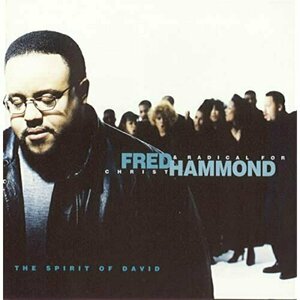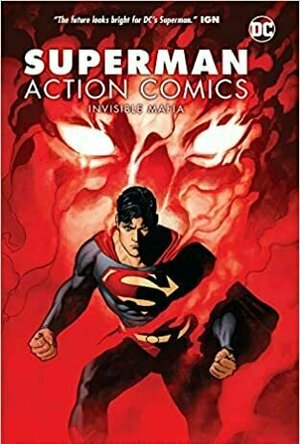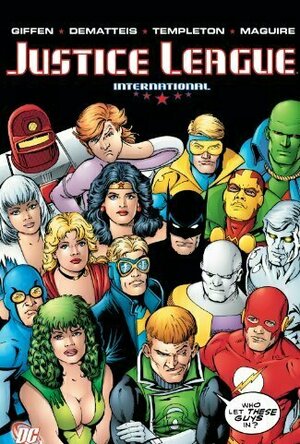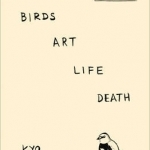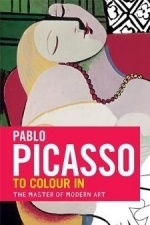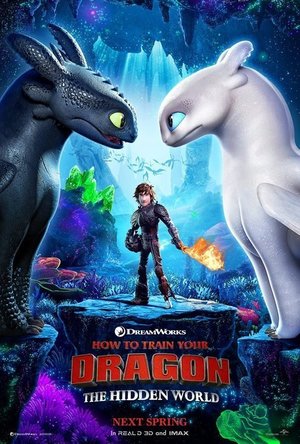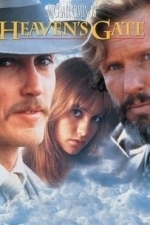Search
Search results
Moses Boyd recommended Breathe Into Me Oh Lord by Fred Hammond in Music (curated)
Joe Goodhart (27 KP) rated Superman: Action Comics, Vol. 1: Invisible Mafia in Books
Nov 30, 2020
So, I am still plowing through the Bendis SUPERMAN stuff, as I took full advantage of the Superman sale that Comixology is running until this Monday (6/22) Hella good deals, bringing me on board for all the Bendis goodness! Yup, I said "Bendis goodness"! This guy seems to be just what DC neeeded! He really truly cares about the character, bringing a sense of heroism back to him, making him truly stand for Truth, Justice, and the American Way (not "Trump AmeriKKKa" either!)!
There's a lot of set-up/world building going on, with a lot set-up for much that is to come during Bendis' run with the Big 'S'. There's some fun, much appreciated typical Jimmy Olsen dialogue. There's some introduction of new "big bad" in Metropolis. And, best of all, Clark Kent is Clark Kent, Superman is Superman, and his beloved Lois Lane is back! Yup, sounds like a heck of a good start for the new run!
Bendis is given some tip-top talent to work with on ACTION COMICS! It starts out with Patrick Gleason, then Yanick Paquette, and finishes it out with Ryan Sook. All three artists compliment each other's style, offering a flawless transition all the way through to the end. Solid work, lads!
It is a good read, one that leaves the wheels a'turnin' in yer mind, as it offers much potential in the next arc, "Leviathan Rising", which sets up the next big Event! Read it, fellow Superman fans, as you will not be disappointed in any way!
There's a lot of set-up/world building going on, with a lot set-up for much that is to come during Bendis' run with the Big 'S'. There's some fun, much appreciated typical Jimmy Olsen dialogue. There's some introduction of new "big bad" in Metropolis. And, best of all, Clark Kent is Clark Kent, Superman is Superman, and his beloved Lois Lane is back! Yup, sounds like a heck of a good start for the new run!
Bendis is given some tip-top talent to work with on ACTION COMICS! It starts out with Patrick Gleason, then Yanick Paquette, and finishes it out with Ryan Sook. All three artists compliment each other's style, offering a flawless transition all the way through to the end. Solid work, lads!
It is a good read, one that leaves the wheels a'turnin' in yer mind, as it offers much potential in the next arc, "Leviathan Rising", which sets up the next big Event! Read it, fellow Superman fans, as you will not be disappointed in any way!
Joe Goodhart (27 KP) rated Justice League International, Vol. 4 in Books
Nov 30, 2020
The 80s. I know, right? What the heck happened??! When did things get so confusing and angstastically heavy?! I mean, beside the frelled up election result for 2016??
Thankfully, despite all of that, there are many good outlets to remind us how to have fun and to also remind us that WE actually used to be FUN! Keith Giffen and J.M. DeMatteis truly know how to have fun times with the likes of Batman, Blue Beetle, and Martian Manhunter, just to name a few of the characters within.
The art, from artists Mike McKone, Ty Templeton, and Kevin Maguire was equally enjoyable, further enhancing the suing fun times. The only art I wasn't wowed by was Bill Willingham's. Not that it was bad or anything of the sort, I just thought it wasn't one of his stronger contributions. But, yeah, the other guys were all aces!
The only reason it didn't warrant Five Stars, or even Four for that matter, was the last issue in the TPB: "Teenage Biker Mega-Death!" (Vol. 1, Issue #30). The story itself was a weaker offering from Giffen and DeMatteis, only made weaker by the art from Willingham. The "big bad" of the story was neither <i>big</i> nor really very <i>bad</i>! Again, not the worst, but not the best.
Overall, though, this is yet another great example of how to make comics fun and enjoyable! If only they had gone this route for 2017's JUSTICE LEAGUE film!
Thankfully, despite all of that, there are many good outlets to remind us how to have fun and to also remind us that WE actually used to be FUN! Keith Giffen and J.M. DeMatteis truly know how to have fun times with the likes of Batman, Blue Beetle, and Martian Manhunter, just to name a few of the characters within.
The art, from artists Mike McKone, Ty Templeton, and Kevin Maguire was equally enjoyable, further enhancing the suing fun times. The only art I wasn't wowed by was Bill Willingham's. Not that it was bad or anything of the sort, I just thought it wasn't one of his stronger contributions. But, yeah, the other guys were all aces!
The only reason it didn't warrant Five Stars, or even Four for that matter, was the last issue in the TPB: "Teenage Biker Mega-Death!" (Vol. 1, Issue #30). The story itself was a weaker offering from Giffen and DeMatteis, only made weaker by the art from Willingham. The "big bad" of the story was neither <i>big</i> nor really very <i>bad</i>! Again, not the worst, but not the best.
Overall, though, this is yet another great example of how to make comics fun and enjoyable! If only they had gone this route for 2017's JUSTICE LEAGUE film!
Bong Mines Entertainment (15 KP) rated I'll Find You in Dreams - Single by Tiphanie Doucet in Music
Jun 26, 2019
The Racer is an indie-band from New York’s Hudson Valley. Not too long ago, they released their “I’ll Find You in Dreams” single featuring singer Tiphanie Doucet.
“Head down can’t keep from falling over. Eyes blurred with grief, we’ve grown like the trees, now slowly older, and I’ll never be your island king. The city sings her song to me. The only soul alone on these tangled streets.” – lyrics
‘I’ll Find You in Dreams’ tells an emotional tale of an individual who yearns for something or someone who seems completely out of reach.
The likable tune contains a dreamy storyline, heartfelt vocals, and emotional instrumentation flavored with great piano lines, evocative synths, and nostalgic elements.
The Racer consists of Pete Marotta (vocals, keys), Mike Esserman (guitar, keys), Eric Sosler (bass, keys, sax).
One day, while looking for artists in New Jersey to be on a show they were organizing, they came across Tiphanie Doucet’s music and loved it.
Shortly afterward, they performed live with Doucet at their show. Later, while hanging out, they asked her to sing on their “I’ll Find You in Dreams” single.
At the age of 15, Tiphanie Doucet starred in the film Le bébé d’Elsa, and later in the Glee-like TV series Chante!
Those exposures increased her popularity in France, where she grew up studying ballet and harp. After her career in TV ended, she made her way to America for a fresh start.
Since then, she’s been writing songs and testing them out on street corners, cruises, and cafés throughout New York and Jersey City.
“Head down can’t keep from falling over. Eyes blurred with grief, we’ve grown like the trees, now slowly older, and I’ll never be your island king. The city sings her song to me. The only soul alone on these tangled streets.” – lyrics
‘I’ll Find You in Dreams’ tells an emotional tale of an individual who yearns for something or someone who seems completely out of reach.
The likable tune contains a dreamy storyline, heartfelt vocals, and emotional instrumentation flavored with great piano lines, evocative synths, and nostalgic elements.
The Racer consists of Pete Marotta (vocals, keys), Mike Esserman (guitar, keys), Eric Sosler (bass, keys, sax).
One day, while looking for artists in New Jersey to be on a show they were organizing, they came across Tiphanie Doucet’s music and loved it.
Shortly afterward, they performed live with Doucet at their show. Later, while hanging out, they asked her to sing on their “I’ll Find You in Dreams” single.
At the age of 15, Tiphanie Doucet starred in the film Le bébé d’Elsa, and later in the Glee-like TV series Chante!
Those exposures increased her popularity in France, where she grew up studying ballet and harp. After her career in TV ended, she made her way to America for a fresh start.
Since then, she’s been writing songs and testing them out on street corners, cruises, and cafés throughout New York and Jersey City.
Hazel (1853 KP) rated Birds Art Life Death: A Field Guide to the Small and Significant in Books
May 23, 2017
Unconventional Field Guide
This eBook was provided by the publisher via NetGalley in exchange for an honest review
There comes a time when novelists, as with any creative professional, become unmotivated or at a loss as to what to write about – writer’s block. Such an occurrence happened to children’s novelist, Kyo Maclear. Through the work of her songwriter husband, Maclear discovers a musician struggling with the demands of his career in a competitive world, causing anxiety and depression. In order to distance himself from the stresses of his employment, the musician finds solace in bird watching. Intrigued as to what prompted his ardent interest in birds, Maclear tags along with him for a year, and thus, Birds Art Life Death: A Field Guide to the Small and Significant was born.
To preempt any confusion, despite what the title may suggest, this book is not a field guide about birds. When Maclear began talking to the musician (who remains anonymous except for a mention in the acknowledgements), she was completely nescient on the subject of birds and had a lot to learn. Although some facts are stated in the narrative, Birds Art Life Death is more a reflective memoir of the author’s life. Using bird watching as a key example, Maclear explores the ways artists of all kinds have retreated from the pressures of everyday life in order to take time to appreciate the smaller, less celebrated aspects.
Bird watching, in particular, provides the musician and Maclear the opportunity to sit still (literally) and just be. Paying attention to the numerous habitats of the winged-creatures provides the author with a new outlook on life, and fodder to include in future works (hence this book). It also gives her the opportunity to reflect on her past, her parents – particularly her anticipatory grief toward her elderly father – her husband, and her sons. In fact, the author’s own life features as heavily as the bird watching trips she goes on.
Written in chronological order from winter through to autumn, Maclear’s knowledge of birds increases, as does her awareness of the world and life around her. However, her sequence of events is often interrupted by retrospective thought and additional research, which causes the book to head in too many directions at once. It is as though the author’s disorganized mind has been spilled onto the page for everyone to see.
It is clear, however, that Maclear has put an exceptional amount of time into researching the topic of birds. She does not regurgitate factual, mundane information about the species; instead she has delved deeper and from an artistic point of view, to discover so much more than an encyclopedic textbook would provide.
From a myriad of resources, Maclear has pulled out quotes from bird enthusiasts and creative individuals alike to emphasise the effects birds have had on people’s lives and artistic careers. Interestingly, many artists and authors have found the delicate creatures fascinating and included them in their works, for example: Leonardo da Vinci, Charles Dickens, William Faulkner and Iris Murdoch.
Birds Art Life Death is unlikely to increase your knowledge of birds or bird watching, however it may inspire you to take time out to explore and enjoy nature. Whether you are a creative individual in need of a break, or an office worker desperately wanting some fresh air, Maclear encourages you to step back from the trials of life and find pleasure in the little, but highly significant, facts of being.
There comes a time when novelists, as with any creative professional, become unmotivated or at a loss as to what to write about – writer’s block. Such an occurrence happened to children’s novelist, Kyo Maclear. Through the work of her songwriter husband, Maclear discovers a musician struggling with the demands of his career in a competitive world, causing anxiety and depression. In order to distance himself from the stresses of his employment, the musician finds solace in bird watching. Intrigued as to what prompted his ardent interest in birds, Maclear tags along with him for a year, and thus, Birds Art Life Death: A Field Guide to the Small and Significant was born.
To preempt any confusion, despite what the title may suggest, this book is not a field guide about birds. When Maclear began talking to the musician (who remains anonymous except for a mention in the acknowledgements), she was completely nescient on the subject of birds and had a lot to learn. Although some facts are stated in the narrative, Birds Art Life Death is more a reflective memoir of the author’s life. Using bird watching as a key example, Maclear explores the ways artists of all kinds have retreated from the pressures of everyday life in order to take time to appreciate the smaller, less celebrated aspects.
Bird watching, in particular, provides the musician and Maclear the opportunity to sit still (literally) and just be. Paying attention to the numerous habitats of the winged-creatures provides the author with a new outlook on life, and fodder to include in future works (hence this book). It also gives her the opportunity to reflect on her past, her parents – particularly her anticipatory grief toward her elderly father – her husband, and her sons. In fact, the author’s own life features as heavily as the bird watching trips she goes on.
Written in chronological order from winter through to autumn, Maclear’s knowledge of birds increases, as does her awareness of the world and life around her. However, her sequence of events is often interrupted by retrospective thought and additional research, which causes the book to head in too many directions at once. It is as though the author’s disorganized mind has been spilled onto the page for everyone to see.
It is clear, however, that Maclear has put an exceptional amount of time into researching the topic of birds. She does not regurgitate factual, mundane information about the species; instead she has delved deeper and from an artistic point of view, to discover so much more than an encyclopedic textbook would provide.
From a myriad of resources, Maclear has pulled out quotes from bird enthusiasts and creative individuals alike to emphasise the effects birds have had on people’s lives and artistic careers. Interestingly, many artists and authors have found the delicate creatures fascinating and included them in their works, for example: Leonardo da Vinci, Charles Dickens, William Faulkner and Iris Murdoch.
Birds Art Life Death is unlikely to increase your knowledge of birds or bird watching, however it may inspire you to take time out to explore and enjoy nature. Whether you are a creative individual in need of a break, or an office worker desperately wanting some fresh air, Maclear encourages you to step back from the trials of life and find pleasure in the little, but highly significant, facts of being.
Hazel (1853 KP) rated Picasso: The Colouring Book in Books
Jul 15, 2017
Educational and Fun
For a full review, including visual examples, please follow this link: https://hazelstainer.wordpress.com/20...
...
Pablo Picasso: To Colour In was published in April 2016 with the intention of using the popular fad to educate readers/colouring book enthusiasts about the techniques and secrets of the great master. Each work included in the book has a brief paragraph explaining what it is (in case you cannot tell) and a few details about Picasso’s intentions or the events happening in his life at the time.
...
Naturally, it would be impossible to produce a book of all Picasso’s recorded works, but the editors of this particular colouring book have carefully selected examples that span the majority of his life, thus encompassing the different styles he experimented with.
The author of the text – presumably Frédérique Cassegrain, who also wrote the biography and information for each included artwork – gives helpful advice about how to colour in the outlined versions of Picasso’s paintings. The paper is thick enough to be suitable for paints, particular Gouache, which is water soluble and easily blended. Alternatively, coloured pencils may be used, preferably of artistic quality, which may be more suitable for those less confident in art and design. Another option, although not mentioned by the author, are felt-tip pens. Usually, these should be avoided due to ink bleeding through the page, however, the paper is single sided, so there is no chance of damaging the following colouring page in the book.
Purchasing Pablo Picasso: To Colour In and completing the book, provides not only hours of fun and relaxation, but an opportunity to discover and understand the artist. Unlike at a gallery where the brain may switch off, being able to go away and return to the book gives us time to absorb the information and concentrate more clearly on the details of each painting.
Opposite each colouring page is a copy of the original in full colour, meaning that, if one desired, one could replicate Picasso’s work as closely as possible. By doing, rather than just looking, we begin to understand the colour choices, piece together the geometric shapes to form an image and begin to understand the thought processes of the artist.
Interestingly, there are two paintings that stand out amongst all the others. These were produced during and after the First World War, a time when Picasso returned to a more classical style of artwork. These are The Pipes of Pan (1923) and The Bathers (1918). Both show a completely different side to Picasso and would not immediately be recognised as his own work. Despite not being entirely life-like, there are no elements of Cubism or Surrealism and the colour palette is altogether natural. Picasso has focused on shading and tone to create a realistic appearance, a contrast to the flattened portraits he is known for.
...
Pablo Picasso: To Colour In will appeal to artists, art historians and other creatives with its contrast of light relief and in-depth knowledge. The book is available online at retailers such as Amazon and The Book Depository from approximately £6. If Picasso is not your thing, there are other artists available in the series of colouring books, including Klimt, Hokusai (Japanese Art), Monet, Van Gogh, Caillebotte and Manet (Impressionists), and Paul Klee. Whatever your preference, prepare to learn whilst you are relaxing and having fun.
...
Pablo Picasso: To Colour In was published in April 2016 with the intention of using the popular fad to educate readers/colouring book enthusiasts about the techniques and secrets of the great master. Each work included in the book has a brief paragraph explaining what it is (in case you cannot tell) and a few details about Picasso’s intentions or the events happening in his life at the time.
...
Naturally, it would be impossible to produce a book of all Picasso’s recorded works, but the editors of this particular colouring book have carefully selected examples that span the majority of his life, thus encompassing the different styles he experimented with.
The author of the text – presumably Frédérique Cassegrain, who also wrote the biography and information for each included artwork – gives helpful advice about how to colour in the outlined versions of Picasso’s paintings. The paper is thick enough to be suitable for paints, particular Gouache, which is water soluble and easily blended. Alternatively, coloured pencils may be used, preferably of artistic quality, which may be more suitable for those less confident in art and design. Another option, although not mentioned by the author, are felt-tip pens. Usually, these should be avoided due to ink bleeding through the page, however, the paper is single sided, so there is no chance of damaging the following colouring page in the book.
Purchasing Pablo Picasso: To Colour In and completing the book, provides not only hours of fun and relaxation, but an opportunity to discover and understand the artist. Unlike at a gallery where the brain may switch off, being able to go away and return to the book gives us time to absorb the information and concentrate more clearly on the details of each painting.
Opposite each colouring page is a copy of the original in full colour, meaning that, if one desired, one could replicate Picasso’s work as closely as possible. By doing, rather than just looking, we begin to understand the colour choices, piece together the geometric shapes to form an image and begin to understand the thought processes of the artist.
Interestingly, there are two paintings that stand out amongst all the others. These were produced during and after the First World War, a time when Picasso returned to a more classical style of artwork. These are The Pipes of Pan (1923) and The Bathers (1918). Both show a completely different side to Picasso and would not immediately be recognised as his own work. Despite not being entirely life-like, there are no elements of Cubism or Surrealism and the colour palette is altogether natural. Picasso has focused on shading and tone to create a realistic appearance, a contrast to the flattened portraits he is known for.
...
Pablo Picasso: To Colour In will appeal to artists, art historians and other creatives with its contrast of light relief and in-depth knowledge. The book is available online at retailers such as Amazon and The Book Depository from approximately £6. If Picasso is not your thing, there are other artists available in the series of colouring books, including Klimt, Hokusai (Japanese Art), Monet, Van Gogh, Caillebotte and Manet (Impressionists), and Paul Klee. Whatever your preference, prepare to learn whilst you are relaxing and having fun.
Hazel (1853 KP) rated Birds Art Life Death: A Field Guide to the Small and Significant in Books
Dec 7, 2018
<i>This eBook was provided by the publisher via NetGalley in exchange for an honest review</i>
There comes a time when novelists, as with any creative professional, become unmotivated or at a loss as to what to write about – writer’s block. Such an occurrence happened to children’s novelist, Kyo Maclear. Through the work of her songwriter husband, Maclear discovers a musician struggling with the demands of his career in a competitive world, causing anxiety and depression. In order to distance himself from the stresses of his employment, the musician finds solace in bird watching. Intrigued as to what prompted his ardent interest in birds, Maclear tags along with him for a year, and thus, <i>Birds Art Life Death: A Field Guide to the Small and Significant</i> was born.
To preempt any confusion, despite what the title may suggest, this book is not a field guide about birds. When Maclear began talking to the musician (who remains anonymous except for a mention in the acknowledgements), she was completely nescient on the subject of birds and had a lot to learn. Although some facts are stated in the narrative, <i>Birds Art Life Death</i> is more a reflective memoir of the author’s life. Using bird watching as a key example, Maclear explores the ways artists of all kinds have retreated from the pressures of everyday life in order to take time to appreciate the smaller, less celebrated aspects.
Bird watching, in particular, provides the musician and Maclear the opportunity to sit still (literally) and just be. Paying attention to the numerous habitats of the winged-creatures provides the author with a new outlook on life, and fodder to include in future works (hence this book). It also gives her the opportunity to reflect on her past, her parents – particularly her anticipatory grief toward her elderly father – her husband, and her sons. In fact, the author’s own life features as heavily as the bird watching trips she goes on.
Written in chronological order from winter through to autumn, Maclear’s knowledge of birds increases, as does her awareness of the world and life around her. However, her sequence of events is often interrupted by retrospective thought and additional research, which causes the book to head in too many directions at once. It is as though the author’s disorganized mind has been spilled onto the page for everyone to see.
It is clear, however, that Maclear has put an exceptional amount of time into researching the topic of birds. She does not regurgitate factual, mundane information about the species; instead she has delved deeper and from an artistic point of view, to discover so much more than an encyclopedic textbook would provide.
From a myriad of resources, Maclear has pulled out quotes from bird enthusiasts and creative individuals alike to emphasise the effects birds have had on people’s lives and artistic careers. Interestingly, many artists and authors have found the delicate creatures fascinating and included them in their works, for example: Leonardo da Vinci, Charles Dickens, William Faulkner and Iris Murdoch.
<i>Birds Art Life Death</i> is unlikely to increase your knowledge of birds or bird watching, however it may inspire you to take time out to explore and enjoy nature. Whether you are a creative individual in need of a break, or an office worker desperately wanting some fresh air, Maclear encourages you to step back from the trials of life and find pleasure in the little, but highly significant, facts of being.
There comes a time when novelists, as with any creative professional, become unmotivated or at a loss as to what to write about – writer’s block. Such an occurrence happened to children’s novelist, Kyo Maclear. Through the work of her songwriter husband, Maclear discovers a musician struggling with the demands of his career in a competitive world, causing anxiety and depression. In order to distance himself from the stresses of his employment, the musician finds solace in bird watching. Intrigued as to what prompted his ardent interest in birds, Maclear tags along with him for a year, and thus, <i>Birds Art Life Death: A Field Guide to the Small and Significant</i> was born.
To preempt any confusion, despite what the title may suggest, this book is not a field guide about birds. When Maclear began talking to the musician (who remains anonymous except for a mention in the acknowledgements), she was completely nescient on the subject of birds and had a lot to learn. Although some facts are stated in the narrative, <i>Birds Art Life Death</i> is more a reflective memoir of the author’s life. Using bird watching as a key example, Maclear explores the ways artists of all kinds have retreated from the pressures of everyday life in order to take time to appreciate the smaller, less celebrated aspects.
Bird watching, in particular, provides the musician and Maclear the opportunity to sit still (literally) and just be. Paying attention to the numerous habitats of the winged-creatures provides the author with a new outlook on life, and fodder to include in future works (hence this book). It also gives her the opportunity to reflect on her past, her parents – particularly her anticipatory grief toward her elderly father – her husband, and her sons. In fact, the author’s own life features as heavily as the bird watching trips she goes on.
Written in chronological order from winter through to autumn, Maclear’s knowledge of birds increases, as does her awareness of the world and life around her. However, her sequence of events is often interrupted by retrospective thought and additional research, which causes the book to head in too many directions at once. It is as though the author’s disorganized mind has been spilled onto the page for everyone to see.
It is clear, however, that Maclear has put an exceptional amount of time into researching the topic of birds. She does not regurgitate factual, mundane information about the species; instead she has delved deeper and from an artistic point of view, to discover so much more than an encyclopedic textbook would provide.
From a myriad of resources, Maclear has pulled out quotes from bird enthusiasts and creative individuals alike to emphasise the effects birds have had on people’s lives and artistic careers. Interestingly, many artists and authors have found the delicate creatures fascinating and included them in their works, for example: Leonardo da Vinci, Charles Dickens, William Faulkner and Iris Murdoch.
<i>Birds Art Life Death</i> is unlikely to increase your knowledge of birds or bird watching, however it may inspire you to take time out to explore and enjoy nature. Whether you are a creative individual in need of a break, or an office worker desperately wanting some fresh air, Maclear encourages you to step back from the trials of life and find pleasure in the little, but highly significant, facts of being.
Hazel (1853 KP) rated Picasso: The Colouring Book in Books
Dec 7, 2018
For a full review, including visual examples, please follow this link: https://hazelstainer.wordpress.com/2017/07/14/picasso-coloured-in/
...
<i>Pablo Picasso: To Colour In</i> was published in April 2016 with the intention of using the popular fad to educate readers/colouring book enthusiasts about the techniques and secrets of the great master. Each work included in the book has a brief paragraph explaining what it is (in case you cannot tell) and a few details about Picasso’s intentions or the events happening in his life at the time.
...
Naturally, it would be impossible to produce a book of all Picasso’s recorded works, but the editors of this particular colouring book have carefully selected examples that span the majority of his life, thus encompassing the different styles he experimented with.
The author of the text – presumably Frédérique Cassegrain, who also wrote the biography and information for each included artwork – gives helpful advice about how to colour in the outlined versions of Picasso’s paintings. The paper is thick enough to be suitable for paints, particular Gouache, which is water soluble and easily blended. Alternatively, coloured pencils may be used, preferably of artistic quality, which may be more suitable for those less confident in art and design. Another option, although not mentioned by the author, are felt-tip pens. Usually, these should be avoided due to ink bleeding through the page, however, the paper is single sided, so there is no chance of damaging the following colouring page in the book.
Purchasing Pablo Picasso: To Colour In and completing the book, provides not only hours of fun and relaxation, but an opportunity to discover and understand the artist. Unlike at a gallery where the brain may switch off, being able to go away and return to the book gives us time to absorb the information and concentrate more clearly on the details of each painting.
Opposite each colouring page is a copy of the original in full colour, meaning that, if one desired, one could replicate Picasso’s work as closely as possible. By doing, rather than just looking, we begin to understand the colour choices, piece together the geometric shapes to form an image and begin to understand the thought processes of the artist.
Interestingly, there are two paintings that stand out amongst all the others. These were produced during and after the First World War, a time when Picasso returned to a more classical style of artwork. These are The Pipes of Pan (1923) and The Bathers (1918). Both show a completely different side to Picasso and would not immediately be recognised as his own work. Despite not being entirely life-like, there are no elements of Cubism or Surrealism and the colour palette is altogether natural. Picasso has focused on shading and tone to create a realistic appearance, a contrast to the flattened portraits he is known for.
...
Pablo Picasso: To Colour In will appeal to artists, art historians and other creatives with its contrast of light relief and in-depth knowledge. The book is available online at retailers such as Amazon and The Book Depository from approximately £6. If Picasso is not your thing, there are other artists available in the series of colouring books, including Klimt, Hokusai (Japanese Art), Monet, Van Gogh, Caillebotte and Manet (Impressionists), and Paul Klee. Whatever your preference, prepare to learn whilst you are relaxing and having fun.
...
<i>Pablo Picasso: To Colour In</i> was published in April 2016 with the intention of using the popular fad to educate readers/colouring book enthusiasts about the techniques and secrets of the great master. Each work included in the book has a brief paragraph explaining what it is (in case you cannot tell) and a few details about Picasso’s intentions or the events happening in his life at the time.
...
Naturally, it would be impossible to produce a book of all Picasso’s recorded works, but the editors of this particular colouring book have carefully selected examples that span the majority of his life, thus encompassing the different styles he experimented with.
The author of the text – presumably Frédérique Cassegrain, who also wrote the biography and information for each included artwork – gives helpful advice about how to colour in the outlined versions of Picasso’s paintings. The paper is thick enough to be suitable for paints, particular Gouache, which is water soluble and easily blended. Alternatively, coloured pencils may be used, preferably of artistic quality, which may be more suitable for those less confident in art and design. Another option, although not mentioned by the author, are felt-tip pens. Usually, these should be avoided due to ink bleeding through the page, however, the paper is single sided, so there is no chance of damaging the following colouring page in the book.
Purchasing Pablo Picasso: To Colour In and completing the book, provides not only hours of fun and relaxation, but an opportunity to discover and understand the artist. Unlike at a gallery where the brain may switch off, being able to go away and return to the book gives us time to absorb the information and concentrate more clearly on the details of each painting.
Opposite each colouring page is a copy of the original in full colour, meaning that, if one desired, one could replicate Picasso’s work as closely as possible. By doing, rather than just looking, we begin to understand the colour choices, piece together the geometric shapes to form an image and begin to understand the thought processes of the artist.
Interestingly, there are two paintings that stand out amongst all the others. These were produced during and after the First World War, a time when Picasso returned to a more classical style of artwork. These are The Pipes of Pan (1923) and The Bathers (1918). Both show a completely different side to Picasso and would not immediately be recognised as his own work. Despite not being entirely life-like, there are no elements of Cubism or Surrealism and the colour palette is altogether natural. Picasso has focused on shading and tone to create a realistic appearance, a contrast to the flattened portraits he is known for.
...
Pablo Picasso: To Colour In will appeal to artists, art historians and other creatives with its contrast of light relief and in-depth knowledge. The book is available online at retailers such as Amazon and The Book Depository from approximately £6. If Picasso is not your thing, there are other artists available in the series of colouring books, including Klimt, Hokusai (Japanese Art), Monet, Van Gogh, Caillebotte and Manet (Impressionists), and Paul Klee. Whatever your preference, prepare to learn whilst you are relaxing and having fun.
Heathski (173 KP) rated How To Train Your Dragon: The Hidden World (2019) in Movies
Feb 20, 2019
Animation and art very expressive (1 more)
Story funny scary and emotional
Emotional rollercoaster
I can write this from a few different perspectives. I went to see this with my nephew who is 4, and the film is a PG. I love the How to train your dragon series. Ive always been impressed by the animation and the strong storyline of the bond between Hiccup and Toothless. This film was excellent. The expression of emotion in the characters was so flawless it felt real The animators and artists excelled themselves, in this truly awesome and beautifully designed film.
I laughed out loud and I had some teary moments. It's was a touching heartfelt goodbye to the series. I enjoyed it. My partner, who's not a huge fan, also enjoyed it and laughed a lot throughout the film. My nephew was entranced. He loves Toothless. The characters were so well done, that he though the baddie (who looks a lot like he was modelled after Arnold Vosloo from The Mummy) was very scary. So much so, he had to leave the cinema, but he came back after some reasurance. We covered his eyes at the next scary bit and soon he was shouting at the screen and getting very animated when the baddie appeared, cheering Hiccup and Toothless along.
This is an awesome family film, plenty of action, very funny and emotional. Watch out for the scary bits and If you are anything like me, make sure you have tissues. ⭐⭐⭐⭐⭐
I laughed out loud and I had some teary moments. It's was a touching heartfelt goodbye to the series. I enjoyed it. My partner, who's not a huge fan, also enjoyed it and laughed a lot throughout the film. My nephew was entranced. He loves Toothless. The characters were so well done, that he though the baddie (who looks a lot like he was modelled after Arnold Vosloo from The Mummy) was very scary. So much so, he had to leave the cinema, but he came back after some reasurance. We covered his eyes at the next scary bit and soon he was shouting at the screen and getting very animated when the baddie appeared, cheering Hiccup and Toothless along.
This is an awesome family film, plenty of action, very funny and emotional. Watch out for the scary bits and If you are anything like me, make sure you have tissues. ⭐⭐⭐⭐⭐
Andy K (10823 KP) rated Heaven's Gate (1980) in Movies
Sep 1, 2018
Masterpiece or disaster? I think a little of both.
The controversy around the production, editing, release and financial and critical disaster around Heaven's Gate is long over now. The destruction of director Michael Cimino's career and the almost bankruptcy of United Artists over this film are several of the endless stories you can read about surrounding this western epic, but now it is 38 years later. How does the film stand up?
I'd say pretty darn well.
The essential story is a semi love triangle between a rich sheriff, a lawless brute and a prostitute/madam set against the American west in 1880s Wyoming. The story involves the decision by the government to kill anyone stealing cattle for their own purposes even if it is only to feed their starving family. (Kind of hard to explain). The main characters have to decide which side they are on for the slowly building eventual bloodbath standoff climax.
I had always heard about the film and it's extremes, including its length of almost 4 hours, but had not seen until today.
The movie does quite a bit right, but the shining star is the sprawling vistas depicting the American west including Wyoming, Idaho and Montana. Cimino filmed extensively during the "magic hour" meaning he could only film for a few minutes per day during that few minute period between sunset and night.
The film does go on a bit long, but the payoff is worth the wait and I would still highly recommend any film fan give it a try. You will not be disappointed.
I'd say pretty darn well.
The essential story is a semi love triangle between a rich sheriff, a lawless brute and a prostitute/madam set against the American west in 1880s Wyoming. The story involves the decision by the government to kill anyone stealing cattle for their own purposes even if it is only to feed their starving family. (Kind of hard to explain). The main characters have to decide which side they are on for the slowly building eventual bloodbath standoff climax.
I had always heard about the film and it's extremes, including its length of almost 4 hours, but had not seen until today.
The movie does quite a bit right, but the shining star is the sprawling vistas depicting the American west including Wyoming, Idaho and Montana. Cimino filmed extensively during the "magic hour" meaning he could only film for a few minutes per day during that few minute period between sunset and night.
The film does go on a bit long, but the payoff is worth the wait and I would still highly recommend any film fan give it a try. You will not be disappointed.
